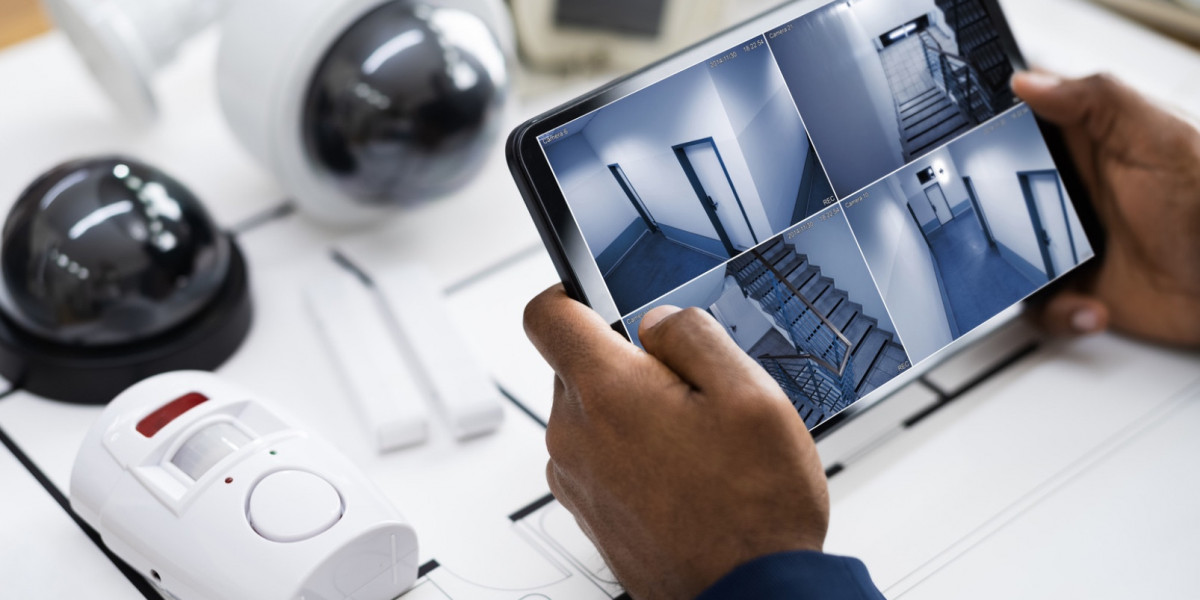Introduction
The smart home security market has witnessed significant growth, with an increasing number of consumers opting for DIY (Do-It-Yourself) security systems. These systems provide homeowners with cost-effective, flexible, and user-friendly solutions that can be installed without professional assistance. The rise of wireless technology, smart sensors, and mobile app integrations has fueled the demand for DIY security solutions. This article explores the factors driving the growth of DIY home security systems, their advantages, challenges, and future trends.
Key Drivers of DIY Home Security System Growth
Several factors are contributing to the rapid adoption of DIY security systems:
1. Affordability and Cost Savings
DIY security systems eliminate installation fees and costly service contracts associated with professional security solutions.
Many DIY systems offer a one-time purchase model or affordable monthly subscriptions.
2. Ease of Installation and Setup
Wireless technology and user-friendly designs make installation quick and hassle-free.
Most DIY security systems come with step-by-step guides and smartphone app instructions.
3. Customization and Scalability
Homeowners can choose components based on their specific security needs.
Systems can be expanded over time by adding smart cameras, sensors, alarms, and automation features.
4. Smartphone Integration and Remote Monitoring
DIY security solutions provide remote access via mobile apps, allowing users to monitor their homes from anywhere.
Alerts, live video streaming, and automation can be managed through smartphones and voice assistants.
5. No Long-Term Contracts
Unlike traditional home security services, DIY solutions do not require long-term contracts.
Consumers have greater flexibility in choosing and upgrading their security systems without financial commitments.
Key Features of DIY Home Security Systems
DIY security systems offer a range of features that enhance home protection and convenience:
1. Wireless Security Cameras
Provide real-time video monitoring with HD and night vision capabilities.
Some models offer motion detection, two-way audio, and cloud storage options.
2. Motion Sensors and Smart Alarms
Detect unauthorized movement and trigger instant alerts.
Can be integrated with lights, sirens, and automated responses.
3. Door and Window Sensors
Alert homeowners when doors or windows are opened unexpectedly.
Work seamlessly with smart locks and security hubs.
4. Smart Locks and Access Control
Enable remote control of door locks and keyless entry.
Some systems feature biometric authentication for added security.
5. AI-Powered Security Analytics
Use artificial intelligence to differentiate between normal activity and potential threats.
Reduce false alarms and improve response accuracy.
Challenges of DIY Home Security Systems
While DIY home security systems offer numerous advantages, they also present some challenges:
1. Limited Professional Support
Unlike traditional security services, DIY systems require users to troubleshoot and maintain the system themselves.
Some consumers may prefer professional monitoring for added security assurance.
2. Internet and Power Dependency
Most DIY systems rely on internet connectivity and power supply.
Connectivity issues or power outages may affect system performance unless battery backup is available.
3. Potential Security Vulnerabilities
Wireless DIY security systems may be vulnerable to hacking or cyber threats.
Strong encryption and regular software updates are essential to prevent security breaches.
Future Trends in DIY Home Security
As technology advances, the DIY home security market is expected to evolve with innovative features and improvements:
AI and Machine Learning Integration: Enhanced threat detection and behavior analysis will improve security accuracy.
5G Connectivity: Faster and more reliable communication will support real-time monitoring and cloud-based security services.
Voice-Activated Security Commands: Smart home assistants will enable hands-free control of security systems.
Advanced Biometric Authentication: Facial recognition and fingerprint scanning will enhance access control.
Increased Adoption of Subscription-Based Security Services: DIY providers may offer optional professional monitoring and cloud storage plans.
Conclusion
The growth of DIY home security systems is reshaping the smart home security market by providing consumers with affordable, flexible, and customizable security solutions. While DIY systems offer numerous benefits, including cost savings and ease of installation, users must be aware of potential challenges such as cybersecurity risks and system maintenance. As technology continues to evolve, AI-driven analytics, 5G integration, and enhanced smart home automation will further enhance the effectiveness and appeal of DIY security solutions. The future of home security is shifting towards intelligent, user-controlled systems that provide enhanced safety and convenience.









